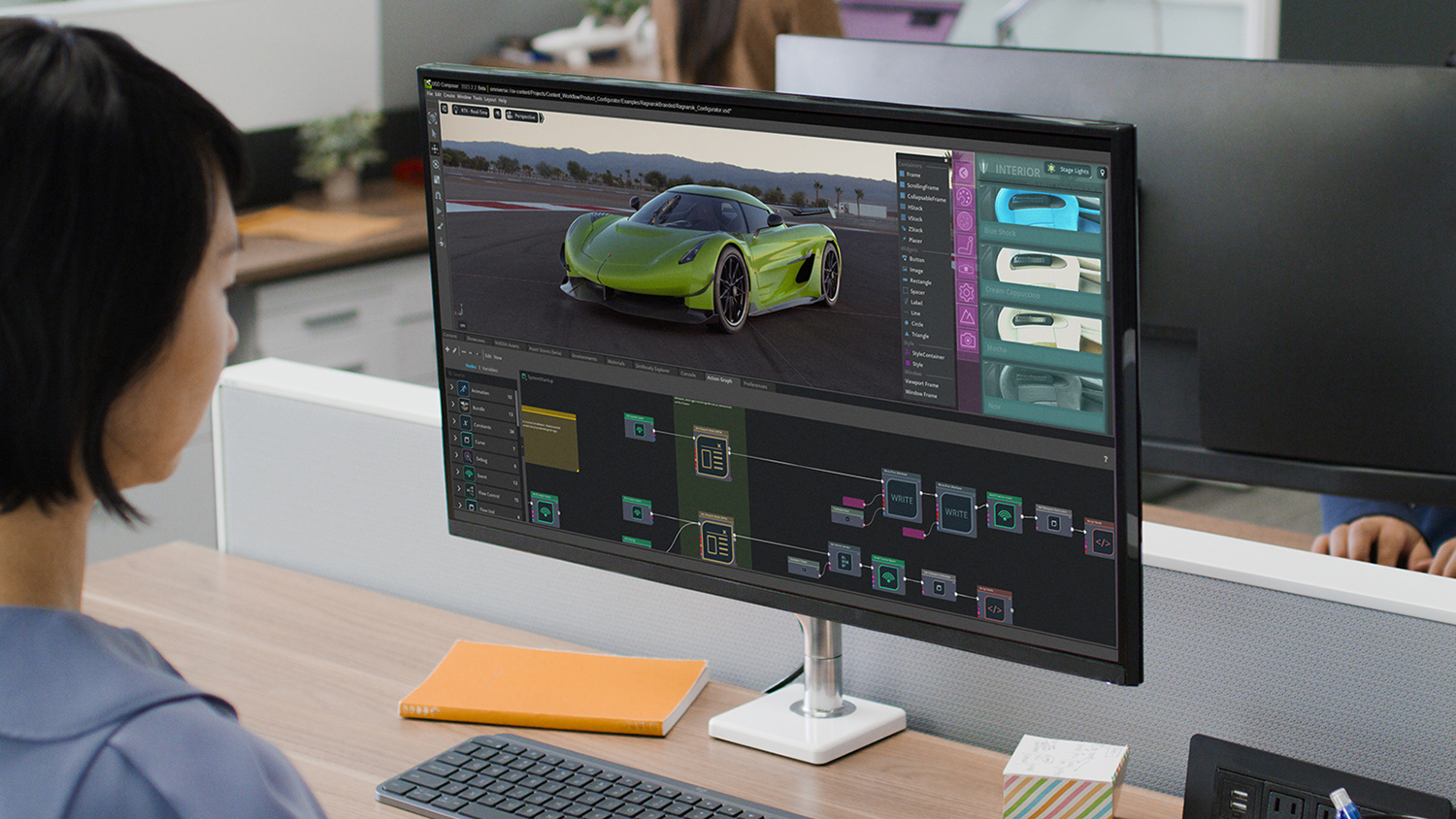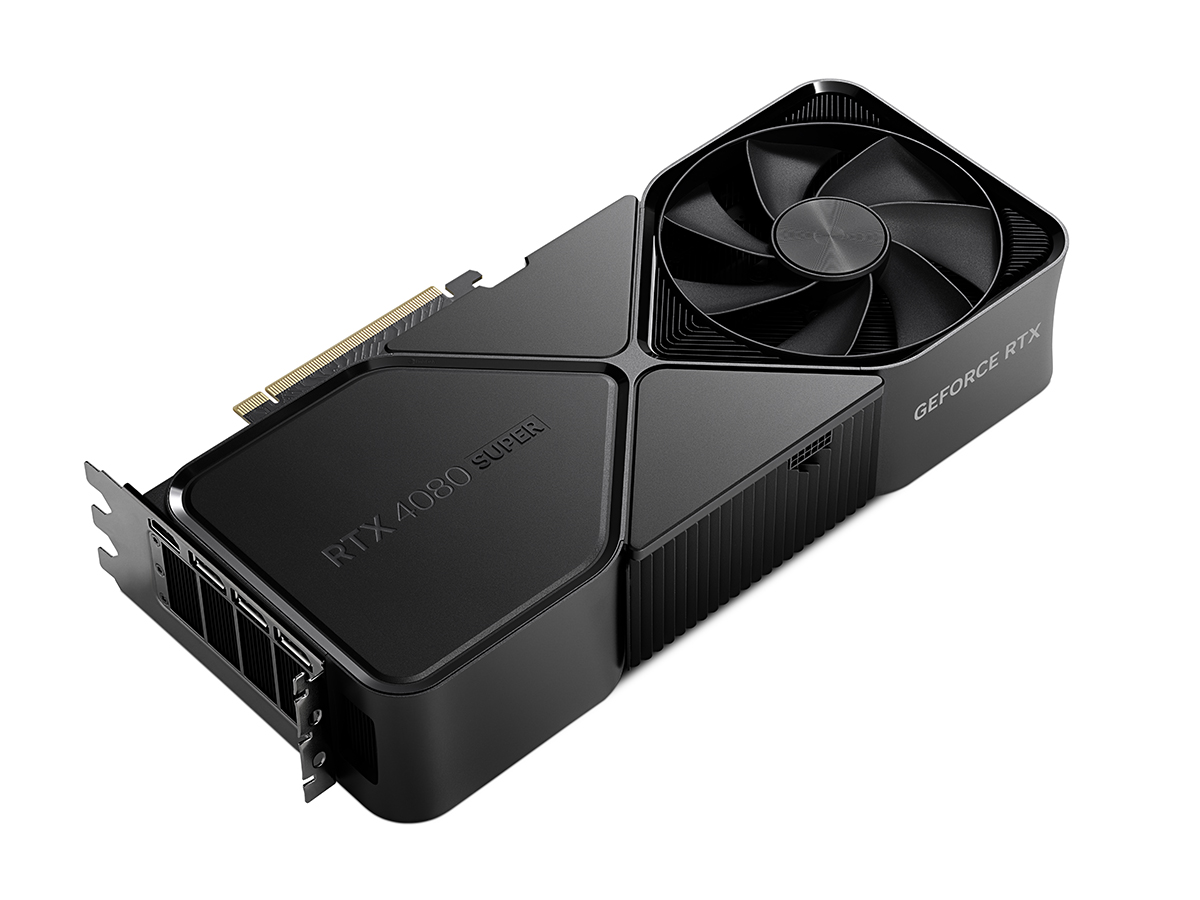
At CES, NVIDIA highlighted car configurators developed and marketed by partners. Image courtesy of NVIDIA.
Latest News
January 9, 2024
This week, as CES 2024 (Consumer Electronics Show, Las Vegas, Nevada, Jan 9-12) kicks off, NVIDIA delivers a special address, highlighting AI-driven developments in various areas. The company discusses, among others, new GPUs for AI PCs and workstations, AI-driven car configurators, and the use of natural language to generate 3D assets in robotic training.
Jeff Fisher, senior VP for GeForce, NVIDIA, was the main voice of the special address. He said, “NVIDIA is at the center of the latest technology transformation—generative AI. It presents an opportunity far larger than the internet ... it will change our workflows, and will give us a copilot to help us become more productive.”
Introducing RTX 40 Super GPU Series
Over the last decade, NVIDIA has reinvented itself as an the AI company. Once known as a game hardware maker, NVIDIA now markets its GPUs as the core component of AI workflows. At CES, NVIDIA takes the opportunity to introduce the NVIDIA RTX 40 Super GPU series: GeForce RTX 4080 SUPER, 4070 Ti SUPER, and 4070 SUPER. These are expected to spawn new offerings from OEMs like HP, Dell, Lenovo, and other PC and workstation makers.
In the announcement, NVIDIA explains, “Mobile workstations with RTX GPUs can run NVIDIA AI Enterprise software, including TensorRT and NVIDIA RAPIDS for simplified, secure generative AI and data science development. A three-year license for NVIDIA AI Enterprise is included with every NVIDIA A800 40GB Active GPU, providing an ideal workstation development platform for AI and data science.”

Asset Creation with Natural Language Prompts
Last March, NVIDIA showed how you could use ChatGPT-style text prompts to generate 3D assets in Omniverse. The technology was offered as an Omniverse extension, called The AI Room Generator. This paradigm is expected to continue.
In the special address, Deepu Talla, VP of Robotics and Edge Computing, NVIDIA, said, “Starting with NVIDIA PICASSO, you can use a text-to-object generative AI model to generate new assets and place them in the scene. With a text prompt, generative AI can add rain, water, rust, and more to existing environments. Task that typically takes an artist days, can be completed in minutes.”
This approach can speed up dynamic environment creation, which is a crucial part of the robotic training workflow. For simulation-based robotic training in platforms like NVIDIA Isaac, in addition to the model of the robot itself, users usually need to create a replica of the environment where the robot operates, such as warehouses and factory floors. The use of natural language for asset generation will accelerate the process.
“Generative AI models achieve higher accuracy, while generalizing rather well. And applications are built using natural language prompts or texts. Given these attributes, generative AI is well-suited for robotics,” said Talla.
Cobots and robots performing tasks alongside human operators are expected to meet regulatory requirements, which define the speed and velocity with which they move. Gerard Andrews, Senior Product Manager for Robotics, NVIDIA, said, “We have active engagement with a number of regulatory bodies. We look at proactive safety, reactive safety, and predictive safety. We are participating in efforts to drive the three concepts and are pushing for a number of safety standards.”
Car Configurators
As AI-powered text-to-image applications begin to gain popularity, NVIDIA is looking at cultivating the same momentum in 3D content. At SIGGRAPH 2023, it demonstrated to automakers a new tool that allows swift generation of design concepts. At CES, the company spotlighted car configurators powered by Omniverse. They're developed and marketed by BITONE, Brickland, Configit, Katana Studio Ltd., WPP, ZeroLight, and other partners.
“OEMs can benefit from a unified asset pipeline that simplifies the integration of design and engineering data for marketing purposes. Omniverse’s enhanced tools also allow them to quickly produce diverse marketing materials, boosting customer engagement through customized content,” NVIDIA points out in its announcement. When running on NVIDIA Graphics Delivery Network, the automotive configurators can be easily published at scale and streamed to most devices.
NVIDIA spotlighted in particular Mercedes-Benz, Polestar, Kodiak, and Pebble as automakers that have infused AI-powered features in their vehicle lines, and are showcasing them at the conference. “Mercedes-Benz is also using digital twins for production with help from NVIDIA Omniverse, a platform for developing applications to design, collaborate, plan and operate manufacturing and assembly facilities … Kodiak is exhibiting an autonomous truck, which relies on NVIDIA GPUs for high-performance compute to process the enormous quantities of data it collects from its cameras, radar and lidar sensors,” NVIDIA announced.
In a briefing with the industry press, Denny Shapiro, VP of Automotive, NVIDIA, said, “With these configurators, consumers can really experience the car the way they like it. They can customize the leather, the trim, and even take the car out for a virtual test drive. For developers, they can even simulate the software that runs inside the car.”
More NVIDIA Coverage
Subscribe to our FREE magazine, FREE email newsletters or both!
Latest News
About the Author
Kenneth Wong is Digital Engineering’s resident blogger and senior editor. Email him at kennethwong@digitaleng.news or share your thoughts on this article at digitaleng.news/facebook.
Follow DE





